Tag: Workouts
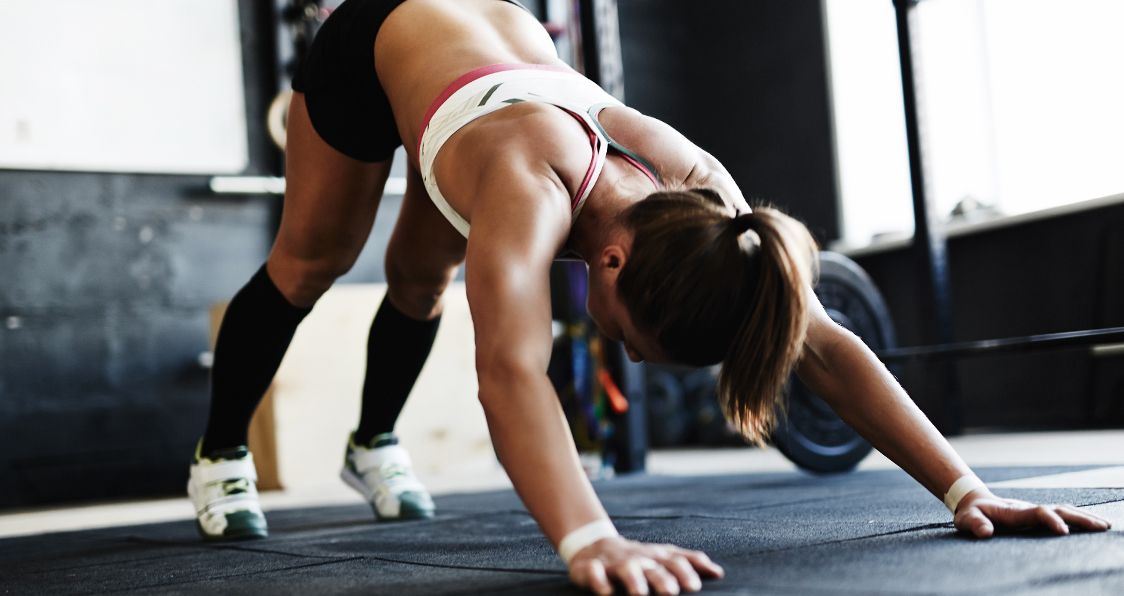
This is How To Shorten Your Recovery Time Between Workouts
Shorten Your Recovery Time Between Workouts With Theses Steps
The work for your dream physique doesn’t end when you walk out of the gym. Contrary to popular belief, you don’t build muscle when you workout. You break muscle tissues while you train and build muscles when they recover while you’re resting outside the gym.
You need to speed up your recovery between workouts to reach your goals faster. Among many other problems, a slow recovery period can cause an injury. Mastering the recovery game will make sure you don’t leave any gains on the table.
Adequate Sleep
Your body recovers the most when you’re deep asleep. We can’t overstate the importance of a good night’s sleep. No matter how busy you are, you need to get 6-8 hours of quality sleep for quicker recovery times and maintaining a healthy nervous system.
Don’t be the person who wears their short sleep times as a badge of honor. Take the necessary steps like switching off your phone, dimming the lights well in advance of your bedtime or taking a hot water shower, if necessary.
Focus on Your Diet
The role of a well-balanced diet is indispensable in recovering between workouts. Maintain the right proportions of the three macronutrients (carbs, protein, and fats) in your diet as per your fitness goals.
Right after you finish your workout is the key time to eat a protein-rich diet to kick-start your recovery process. On the days you go harder than usual in the weight room, remember to load up on extra carbs. Making small adjustments like these are critical to a faster recovery.
Hydrate
Our bodies are 70% water, and yet many people make the mistake of not drinking enough water throughout the day. Drinking water can help rid your body of toxins and can prevent dehydration lead headaches, acne, etc.
You need to stay away from dehydration as it can lead to sore and painful muscles. Your goal should be to drink a gallon of water every day. Drinking the recommended amount of water can also help promote cardiovascular health and lead to healthier looking skin.
Stretch Every Day
Stretching is one of the most overlooked aspects of working out. Many people think stretching is not for bodybuilders and completely ignore it. Stretching out your muscles after workouts can aid muscle recovery and help in preventing future injuries.
You can improve your mobility and get rid of joint pains by stretching. It’s better to stretch after training than to apply ice packs after you pop a muscle while working out because of stiffer joints and muscles.
Supplementation
Supplements can be incredibly efficient in speeding your recovery between workouts. There are different types of supplements you can use for better recovery. You can use a BCAA supplement during your training session to start your recovery process.
A protein shake right after your workout will be soaked by your muscles like a sponge which can help in speeding up your recovery. A glutamine supplement before you hit the sack can help in repairing your muscles while you sleep.
How much water do you drink in a day? Let us know in the comments below. Also, be sure to follow Generation Iron on Facebook and Twitter.
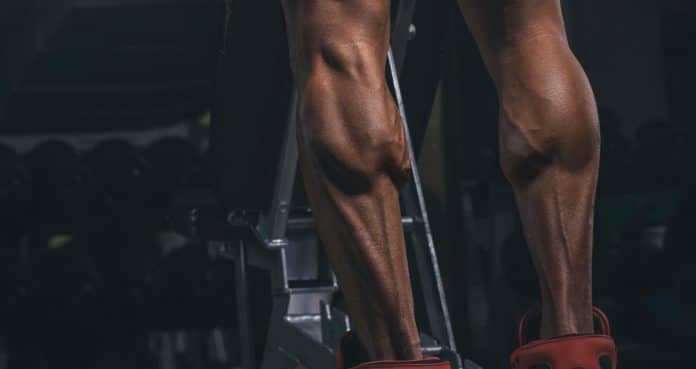
5 Rules of Building Monstrous Calves For Lower Body Gains
Build those monstrous calves with these 5 rules.
If you were to make a list of the most undertrained and overlooked muscles, calves would probably end up at the top spot. Most people have toothpick calves because they treat them as accessory muscles. And even those who partake in something like leg day may often skip the calf work altogether. And while in the moment this may seem fine, over time it will obviously hurt you.
You need to train your calves like you train all your other muscles. You should know about the unsaid rules of training calves. Calves can be one of the most stubborn muscles to develop and you need to be ruthless with them if you want them to grow. That’s just the honest truth and being prepared for whatever comes your way when training calves is imperative if you wish to actually see growth.
But you may be wondering how best to actually build those monstrous calves. With so many workouts, it may seem like a no brainer, but it isn’t necessarily the exercise, but more so the approach to training. What you will find are key tips to building muscles and especially those stubborn calves as you wish to see those desired changes become reality.
Let’s jump into the best ways to build those calves and offer up 5 tips so you see success. Building muscle in general can be challenging but with the right approach to all things gains, what you will find are those calves will grow in no time and you will see results.
Benefits Of Building Those Calves
The benefit of building strong calves really comes in handy with athletic performance power driven from the legs. What you will find is that strong calves can stabilize your knees and reduce the risk of injury when working hard. On top of that, your lower body aesthetic will shine and you won’t be disappointed with the results of how you look and feel.
5 Rules For Building Monstrous Calves
Let’s jump into the 5 rules for building those monstrous calves. What you will find are you can build those calf muscles effectively for strength and size no matter the exercise or overall workout.
1. Train Them From All Angles
For overall development of the calves, you need to train them from all the angles. Changing the feet placement on the machine targets different parts of the calves. Standing with your feet parallel to each other will target the medial calves.
To target the inner calves, stand with your toes placed apart and your heels together forming a “V”. Placing your toes together and heals apart (forming an “A”) will target the outer calves. Training the muscle in different ways not only builds better overall strength but also will aid in symmetry and add to that aesthetic. Only working one side of the muscle may give it a lopsided look that you just don’t need.
2. Switch the Intensity
You can’t expect to perform the same calf exercises in every workout and expect to see results. You need to shock your muscles in every workout for them to grow. Perform different exercises in every workout and maximize intensity while keeping yourself safe and supported.
Change the intensity of your calf workouts by switching between light weight and high reps and heavy weights and low reps. While using light weights, perform a lesser number of sets as compared to using heavier weights. While this is common with most exercises, what you will find is that the intensity of your workouts will determine just how much muscle is built and how much muscular endurance you build.
3. Full Range of Motion
Most people make the mistake of lifting weights which are too heavy for them. Lifting heavy while training calves can limit your range of motion. You need to follow a full range of motion to recruit all the muscles fibers in your calves.
While performing the calf raises, your heels should be a few inches off the ground at the bottom of the movement. At the top, your feet should look like that of a ballerina standing on her toes. Working with a full range of motion, and even a half range of motion just to mix things up, will better prepare you as you work out and see the best gains possible.
4. Train Them if They Aren’t Sore
A rule of thumb for training calves is you can train them if they aren’t sore. Calves are relatively small muscles and need a smaller amount of time to recover after your workouts. If you have weak calves, you can take the liberty of training them whenever they aren’t sore.
You need to perform a variety of standing (legs extended) and seated (knees bent) calf exercises to optimally train your calves. The standing variation trains the gastrocnemius muscle while the seated trains the soleus muscle. Plus, you at least add a little variety into your routine.
5. Use Advanced Training Techniques
You can take your calf training to the next level with the advanced training techniques. Use supersets, drop-sets, intra-set stretching, forced reps, negative reps, and other advanced techniques to completely annihilate your calves.
You don’t have to stick to the vanilla calf training. If you have special needs, cater to them by going out of the way. If you have weak calves, don’t blame your genetics, work on your calves until they turn into full brown bulls and advanced techniques can certainly help you get there.
Wrap Up
Growing our calves isn’t easy, but with these 5 rules to build those monstrous calves you can see the best gains possible. Working with different angles, training intensity, range of motion, soreness and fatigue, and advanced training techniques is a sure-fire way to attack those calves so they grow. What you will find is your performance will improve as well as your aesthetic, so others will envy those monstrous calves.
Let us know what you think in the comments below. Also, be sure to follow Generation Iron on Facebook, Twitter, and Instagram.
*Images courtesy of Envato
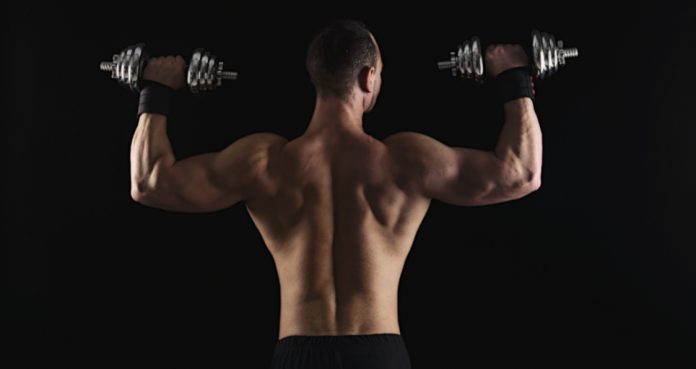
An Old School Back Workout For a Wider and Thicker Back
Get Golden-Era Back Workout for a Cobra Back
As the gyms and exercise equipment get better with new research and technology, more people are falling into the trap of relying solely on machines in their workouts. A chiseled V-taper is the result of a carefully crafted workout.
While the machines can bring you the separation and definition, if your goal is the golden-era aesthetics, you’re better off sticking to the old school back workout. We’ll be focusing on compound movements for building width and thickness in your back.
Pull-ups – 50 Reps
Pull-ups should be a staple in your back workouts. Start your workout with 50 reps of military-style strict pull-ups. Don’t use momentum by swinging your legs or jerking to lift yourself up.
If you can’t complete the 50 reps in one set, use as few sets as possible. Shorten your rest periods between sets to keep the tension on your lats. Use a pull-up assist machine if you can’t perform bodyweight pull-ups.
Deadlifts – 3 Sets 8-6-4 Reps
Perform the deadlifts at the beginning of the workout to exhaust your backs. A good back workout should be as brutal as a leg workout done to the max. Deadlifts are a compound exercise and one of the key movements to build strength, conditioning and muscle mass.
Since you’ll be performing fewer reps on the deadlifts, your goal should be to move as much weight as possible. Make sure you’re don’t lose your form while performing the exercises listed in the workout.
Behind the Neck Lat Pulldowns – 3 Sets 15-12-10 Reps
Behind the neck lat-pulldowns can better recruit your lats as compared to the orthodox version. While the pulling exercises work the width of your back, the rowing movements work the thickness.
It’s important to have a mix of pulling and rowing movements to build a cobra back. People with stiffer shoulder joints can have a problem performing the exercise and should warm-up their rotator cuffs before beginning to train.
T-Bar Rows – 3 Sets 12-10-8 Reps
T-Bar rows are one of the most underutilized back exercises and are sadly fading out. If you don’t have access to a T-bar row machine at your gym, you can perform the exercise on a barbell by placing one side in a corner and attaching a V handle.
Bend over at your hips so your upper body forms a 60-degree angle with the floor. As you pull the bar towards your chest, pause and contract your lats at the top of the movement. Return to the starting position and repeat for the recommended repetitions.
Dumbbell Pullovers – 3 Sets 12-10-8 Reps
Dumbbell pullovers are incredibly effective in shaping the v-taper. Lie down across a flat bench and place your shoulders on the bench. Your knees should be bent, feet placed flat on the floor, and hips as close to the floor as possible.
Hold a dumbbell right above your chest with your elbows slightly bent. Maintain the slight bend in your elbows as you lift the dumbbell off your chest and lower the dumbbell to the floor when it passes over your head.
Barbell Rows – 3 Sets 12-10-8 Reps
Barbell rows target the upper and middle back and help in building the thickness in your back. Pulling the barbell towards your lower abdominal will target your middle back and bringing the bar towards the upper abs will train your upper back.
Using the wrist straps can help you get a better pump in the exercise as it eliminates the wrist and forearm recruitment. In the compound exercises like the barbell rows, your grip strength is more prone to fail before your back.
Who do you think has the best back? Let us know in the comments below. Also, be sure to follow Generation Iron on Facebook and Twitter.
*Header image courtesy of Envato Elements
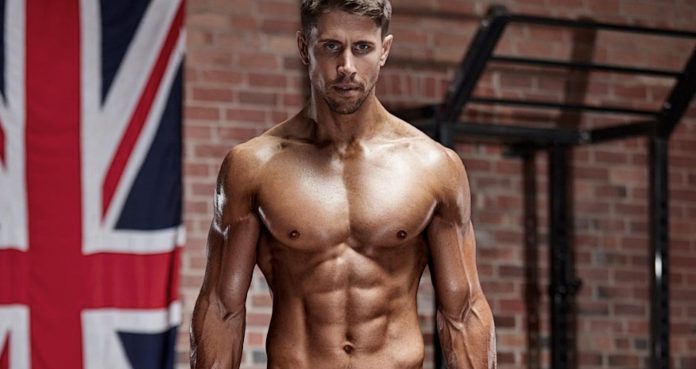
The One Exercise for Dense Six-Pack Abs
The One Exercise for Dense Six-Pack Abs
We’ve all heard the line that “abs are made in the kitchen”. Well, it’s wrong. While diet is important in order to see your six-pack abs, like any other muscle group your abs need to be built using hypertrophy-based exercises and routines. If your abs lack density then no matter how hard you diet then you’ll not be unveiling a lot of muscle underneath that layer of body fat.
Abs are carved in the kitchen, but they’re made in the gym. If you were to pick just one exercise to cover all of your ab training needs then ab rollouts should take the top spot.
The Basic Ab Rollout
[embedded content]
The humble ab wheel looks like something more suited to the shopping channel than any truly effective workout. While it started out as somewhat of a gimmick, right now some of the most respected trainers across the globe are using to great effect it with their clients and athletes. Don’t just take my word for it, though, or that of other top trainers, as research can back them up too.
Numerous studies have compared them to a host of other common abs and core exercises. And guess what? Ab rollouts consistently take the podium when looking at muscle activation across all areas of your abdominals. Sure, some exercises might activate one area a little more, but these usually perform very poorly in other areas of your abdominals to compensate. As an example, another great abs exercise in hanging leg raises can show high regional muscle activation in the lower rectus abdominis (lower six-pack region), and even external obliques, but at the same time do very little for your upper and “deep” abdominals.
Ab rollouts do a great job at activating all areas of your abdominals — your lower rectus abdominis fibers (lower abs), upper rectus abdominis fibers (upper abs), external obliques, as well as some of the deeper core muscles (transverse abdominis and internal obliques). Ab rollouts are commonly termed an “anti-extension” exercise, developing strength around your spine and your ability to resist spinal extension and an anterior tilt of your pelvis. So, on top of helping you grow your six-pack abs, they’re great for your back health and athleticism too!
How to Progress Your Ab Rollouts
Ab rollouts look like a simple movement, but if you do them correctly they can be deceptively difficult and a darn sight more effective. Here’s how to get better at them and master the basics.
[embedded content]
More Hardcore Rollouts
You wouldn’t build your biceps using the same 10lb dumbbell for years on end, so why do your abs get treated the same way!? If you’ve mastered the basics already then you’ll want more of a challenge. Putting more mechanical tension through your abdominals is the only way to keep them growing. Here are two ways to make them harder.
[embedded content]
Hamstring-activated rollouts work through a mechanism known as “reciprocal inhibition”. In short, by activating one muscle, your nervous system somewhat “switches off” the muscle that opposes it (the antagonist muscle). In the case of hamstring-activated rollouts, squeezing a ball using your hamstrings somewhat “switches off” your hip flexors. Research has shown hamstring activation to cause your abdominals to work up to 26% harder! This isn’t to say your hip flexors aren’t important, but in this case taking them out of the picture helps you get more out of your ab rollouts if they’ve previously been too easy.
[embedded content]
For an even simpler way to upgrade your rollouts then you can try adding isometric holds (pauses). One of the best places to add a pause is right at the bottom of the rollout where your core is working hardest to resist your spine from collapsing. You can also add a pause about half way up, or even right at the top as you flex your spine as if to perform a crunch.
Sets and Reps
To build your abdominals like any other muscle group you need to subject them to a hypertrophy-focused training protocol. For more densely build six-pack abs then focus on getting stronger at ab rollouts in the 8-20 repetition range.
For more news and updates, follow Generation Iron on Facebook, Twitter, and Instagram.
Follow Gareth Sapstead on YouTube.
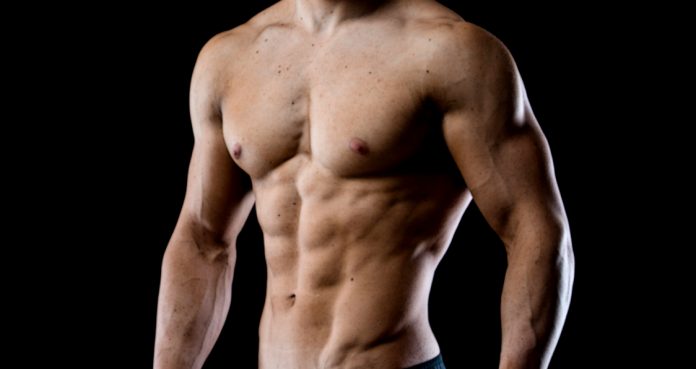
Looking to Build Muscle and Strength? You Need to Follow these Laws
Follow These Strength and Muscle Building Laws for Results
Bodybuilding is both art and science. If you’re looking to put on muscle mass or gain strength, there are set laws you need to adhere to. These rules are the holy grail of strength and muscle building.
Having a rule-breaking mindset might be a good thing, but it won’t do a lot for you in the gym. Muscle and strength building is like physics where sticking to the laws will get you the best returns.
Warming Up is Important
Most people make the mistake of not warming up their muscles before a workout. It doesn’t matter if you’re running late or you spent five minutes on the treadmill. You need to warm up your muscles with light sets and stretching.
Get the Volume, Reps, and Weights Right
You need to be clear about your goals before lifting weights. If your primary goal is to build strength you should lift heavier weights for fewer reps and do 5-6 sets of every exercise. On the other hand, if you want to build muscle, performer higher reps with lighter weights and keep the volume low.
Overtrain
The word ‘overtraining’ is thrown around by broscientists without understanding what it means. We’re using overtraining as a positive word which means training and exhausting your muscles to a whole new level. The negative type of overtraining happens when the CNS and immune system of a person takes a hit and his body fails to recover even after a small workout. Most people don’t have what it takes to even reach this level.
Change Your Routine
When you follow the same training program for a long time, your body will get used to it and will stop responding. You should keep changing your training routine to avoid or break a plateau. Although, make sure you don’t switch your routine way too often.
Try Different Grips
Tweaking your training even in the smallest way possible can bring incredible results. Switch between underhand, overhand or neutral grips. Changing grips will target your muscles a little differently. Using a thicker bar or Fatgripz can also prove effective.
Use Advanced Training Techniques
Advanced training techniques are a great way of shocking your muscles into growing. Drop sets, supersets, blood flow restriction training (BFR), negatives, intraset stretching are some of the most common types of advanced techniques you should try in your next workout.
Focus on Your Diet
You won’t see the desired results in your body until your diet is on point. You should be clear about your daily macronutrient (protein, carbs, and fats) goals. Eat 6-8 meals in a day at regular intervals to keep your metabolism going.
Recovery is the Key
Sleep is where all the magic happens. No matter how hard you workout in the gym, you won’t see the results until your body is properly rested. 6-8 hours of sleep every night are optimal to trigger the changes in your body.
Train Your Weaker Muscle Groups First
It can be tempting to train and improve your stronger muscle groups by training them before your weaker muscle groups, but you should be approaching it the other way around. Eg- If you train your biceps and triceps on the same day and your tris are lagging as compared to your bis, you should train your tris before your bis. And if your legs are lagging, you should train them after a rest day when your body is rested.
Establish a Mind-Muscle Connection
Mind-muscle connection in bodybuilding is what makes all the difference. Bodybuilding isn’t about going through the motions. Arnold famously said that you need to become your muscle when you train it. Focus on contracting and squeezing the living hell out of your muscles with every rep.
Are you breaking any one of these laws? Let us know in the comments below. Also, be sure to follow Generation Iron on Facebook and Twitter.
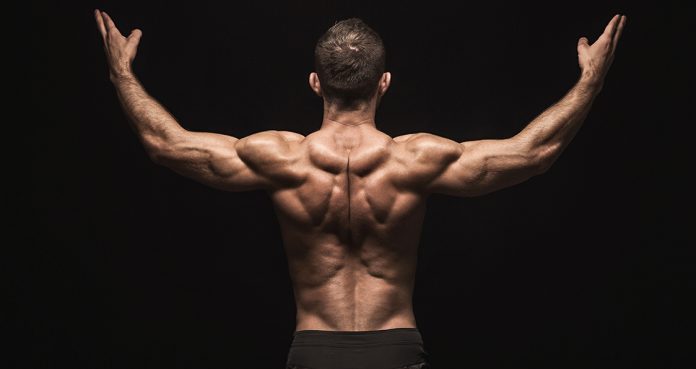
All-Time Best Back Exercises For the Perfect V-Taper
Best Exercises For Building A V-Taper
A V-taper is a result of a combination of factors and months, if not years, of hard work. Building a cobra back requires you to target your back from all angles and put equal focus on your upper, lower and middle back.
Just like us humans, all exercises aren’t created equal. A few exercises are more effective at building a wide and thick back than the others. You need to have a perfect mix of isolation and compound exercises in your back workouts to build the perfect V-taper.
Deadlifts
Deadlifts are the king of back exercises. It’s a compound (multi-joint) movement which can help in developing muscle mass, conditioning, and strength. Your goal while performing the deadlifts should be to lift heavier weights while keeping the rep-range low.
Not only will deadlifting help you in building your back but will also improve your core strength. A stronger core can result in better stabilizers which can help in performing all the other exercises.
Bent Over Single Arm Dumbbell Rows
Bent over dumbbell rows are a great exercise for developing your upper and middle back. Following a full range of motion while performing the exercises mentioned in the article is critical to ensuring you don’t leave any gains on the table.
Use accessories like the wrist straps to hold onto the weight. While performing the back exercises, your forearms are prone to giving up before your back. Using wrist straps can help you better focus on your back by eliminating your grip strength.
Lat-Pulldowns
While the rowing movements help in building the thickness in your back, pulldowns focus on the width. At the beginning of your back workouts, warm-up by performing 50 reps (in 2-3 sets) of the pull-ups.
Make sure you don’t use momentum by swinging back and forth to pull the bar to your chest. Maintain a strict form, and you’ll feel the wings growing out of your back. Just don’t go skydiving with your new wings.
Hyperextensions
The lower back is one of the most overlooked muscles when it comes to back training. The presence of a well-defined lower back can make or break a picture-perfect V-taper. Adjust the hyperextension machine so it doesn’t recruit your hams while performing the exercise.
If the bodyweight version of the hyperextensions is too easy for you, feel free to add resistance by using weights. Maintain a slight arch in your back throughout the exercise, and pause and contract your lower back at the top of the movement.
Seated Cable Rows
Seated cable rows target your middle back and can improve the separation in your back. Most people make the mistake of swinging back and forth while performing the seated cable rows.
Maintain the natural curvature of your back and push your chest out while performing the exercise. Contract your back as you bring the handle attachments of the pulley machine to your sides.
Which is your favorite back exercise? Let us know in the comments below. Also, be sure to follow Generation Iron on Facebook and Twitter.
*Header image courtesy of Envato Elements
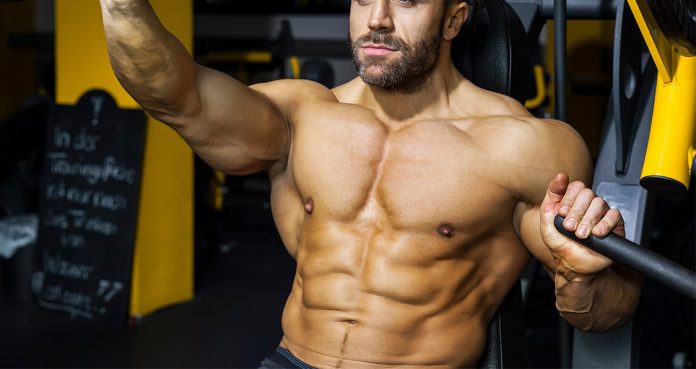
How To Get A Better Chest Day Pump
Tips for a Better Chest Day Pump
Almost all men who workout desire a wider chest. A broader and fuller chest can make you stand out of the crowd other than the fact that it adds a dash of masculinity to your personality.
A muscle pump is critical to the development of your muscles. The pump is when blood rushes to your working muscles and carries lactic acid and nutrients along with it. Developing your chest can be hard if you’re unable to recruit all your pectoral muscles during your workouts.
Pre-Exhaust Your Pecs
Most people start their chest workouts with the good old barbell bench press. While there is no denying the fact the bench press is a great exercise, performing an isolation exercise like the cable flyes can result in a better chest pump.
Performing the cable flyes at the beginning of your workouts will exhaust your pecs and you won’t have to lift as big weights as compared to what you would’ve to lift if you started off with the bench press.
Use a Pre-Workout Supplement
Pre-workout supplements can be incredibly effective in helping you get a pec pump during your workout. Pre-workout supplements have ingredients like nitric oxide, beta alanine, caffeine, beetroot extract, etc. which can help in achieving and amplifying muscles pumps.
Not only will the pre-workout supplement help you get a muscle-ripping pump but will also improve the quality of your workout by delaying fatigue, improving your focus and mind-muscle connection.
Add Isolation Exercises To The Mix
Compound (multi-joint) exercises like the bench or dumbbell presses are great at building muscle mass and strength. On the other hand, isolation (single-joint) exercises like pec deck fly, cables, chest machines are effective in getting you a better muscle pump and developing muscle conditioning.
Make sure you don’t rely too heavily on the isolation exercises as they might feel easier and quicker to perform. Maintain the right balance between compound and isolation movements to get the best of both worlds.
Increase Intensity and Change Rep Tempos
If you’ve been performing the 5 exercises of 3 set and 12 reps training routine and are not getting a muscle pump anymore, it’s time to spice things up. Pump your workout intensity by performing higher reps (15-20) to take your workouts to the next level.
Changing your rep tempos can also help in inducing better and nastier muscle pumps. An example of the rep tempos could be to slow down the negatives (eccentric movement) and fasten up the positive (concentric movement).
Use Advanced Training Techniques
Hitting a plateau can be one of the biggest factors for not getting a pump. Using advanced training techniques like the supersets, drop sets, intraset stretching, etc. can be an incredibly effective way of breaking through the overhead glass ceiling.
Try to incorporate at least one advanced training techniques in your workouts for getting a muscle-scorching pump. There are numerous training techniques to keep you entertained while ensuring muscle growth and development.
Which is your favorite chest exercise? Let us know in the comments below. Also, be sure to follow Generation Iron on Facebook and Twitter.
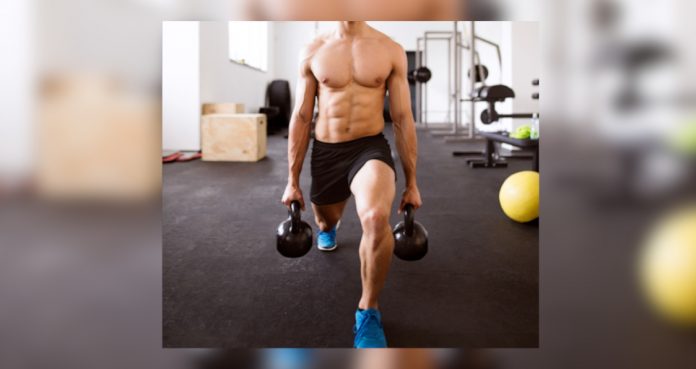
The Ultimate Guide to Lunging, The Perfect Home Workout
Building Strength, Size, and Stability in the Legs
Lunges are undoubtedly one of the leg-based exercises for improving single-leg strength, athletic performance, balance, and coordination.
Not only is the lunge a very simple exercise to perform, there is also a wide range of lunging variations that can be added into your training program.
This article will discuss the benefits associated with this exercise and look at a number of effectual lunge exercise variations.
Lunging Benefits & Muscles Worked
The movements involved in the lunge activate a wide range of muscles throughout the body. Be aware that specific variations will work certain muscles more heavily than others.
Generally speaking, the lunge is a hip and knee dominant movement (1) that requires work from the glutes, quads, hamstrings and calves.
Core musculature also must engage in order to stabilize the trunk as the knee drops down towards the floor.
So, what exactly are the specific benefits associated with working these muscle groups in this fashion?
1) Improved Single-Leg Balance & Coordination
Although both feet are in contact with the floor during the lunge, the exercise is really a unilateral (single-limb) exercise as the drive comes primarily from the leading leg.
In addition, the small base of support that is associated with the lunge also increases the demand for core stability, positional awareness, and joint & muscle coordination.
Unilateral training is an excellent way of developing proprioception which simply relates to the nervous systems control over movement and includes things like balance, coordination, and stability.
This makes the lunge a great accessory exercise for lifters who are primarily on two feet. For example, regularly performing the lunge can facilitate a greater performance in a squat.
Furthermore, all athletes who participate in foundational human movements such as running, jumping, and sprinting can find the lunge to be of great benefit.
2) Building Strong Glutes
As mentioned with the previous point, lunging can facilitate performance and enhance movement efficiency.
Considering that the glutes are the muscles primarily responsible for hip extension, it should be clear that they play a pivotal role in the majority of these movements.
As a result, it is crucial that the glutes are regularly targeted in strength training. Building strong and powerful glutes will have a positive impact on how you perform in the gym or on the field.
In addition, strong glutes will take a lot of the strain off the lower back thus reducing the risk of sustaining an injury or developing low back issues (2).
3) Addressing Asymmetries and Imbalances
As mentioned in the first point, the lunge exercise places the majority of the demand on the front leg meaning that both legs must work individually.
Lifters who are constantly performing bilateral exercises such as deadlifts, squats, and leg presses, may develop strength imbalances between limbs (often without realizing it).
These imbalances and asymmetries have the potential to cause injury, inhibit performance and cause a range of issues with movement and mobility.
Single leg improvements through lunges can help to eradicate any imbalances or asymmetries that exist and consequently have a positive impact on movement and strength.
4) Accelerated Muscle Growth
Adding lunges into your training is an excellent way to increase muscle growth in the legs.
Unilateral exercises like lunges, cause a large degree of muscle activation and neurological activity (3) – a key components for muscle growth.
As a consequence, adding lunges into your training as an accessory exercise can help to increase overall training volume and bring about improvements in size.
For the athlete or lifter, building lean muscle can have a positive effect on force generation & stability, therefore enhancing athletic performance.
5) Reduced Risk of Injury
Improving proprioceptive abilities, such as stability, balance, and coordination, can effectively reduce the likelihood of experiencing an injury (4).
In addition, strengthening the muscles of the legs with exercises like the lunge can promote general knee and hip health.
Having healthy joints is important for everyone, however, it is of even greater significance for the athlete if they aspire to remain injury-free.
5 Lunging Variations for Strength and Performance
This section will detail 5 common lunge variations can be used to efficiently develop strength, size, proprioception, and performance.
Be aware that the type of equipment you use with each variation is dependant on your training goal; a wide range of equipment can be used for the majority of the following exercises.
1) Front Lunge
In a similar way to the split lunge, the front lunge is a great exercise for maximally loading the quads.
The exercise very simply involves stepping forward and into a lunge which places a great load on the front leg.
Once the back knee has dropped down toward the floor, the quads must powerfully contract to extend the knee and bring you back up to standing.
This variation places less of a demand on the glutes and hamstrings, therefore, select a different variation if the training goal is posterior chain development.
2) Reverse Lunge
As the name suggests, the reverse lunge is the opposite of a front lunge and involves stepping back into a lunge.
This change of technique places more of a demand on the glutes and hamstrings as they are heavily loaded through the eccentric phase of the movement.
Once stepping back and dropping down, you must then drive powerfully through the front leg to step forward and return to the starting position.
To increase the demand on the hamstrings and glutes, take a bigger backward step. The bigger the distance between the feet, the greater the range of motion and consequent demand.
3) Lateral Lunge
The lateral variation is an excellent choice for the athlete as it is imperative that they are strong in multiple planes of motion.
This variation involves stepping out to the side and bending only the leading leg which places greater stress on the adductors and glutes.
The movement is superb for promoting hip health, building knee stability and developing muscle size.
As well as building strength in a non-sagittal plane, this exercise can also effectively develop movement efficiency, hip function, and reduce the risk of injury to the knee and hip.
4) Crossover Lunge
The crossover lunge is one of the more technical lunging variations which combines the front/reverse lunge and the lateral lunge. Note that this variation can be performed either to the front or back.
Many of the benefits associated with this variation are the same as the aforementioned exercises – improved force generation, stability, and proprioception.
However, the crossover lunge does have a unique benefit in that joint mobility and integrity are highly challenged through this movement which can lead to a reduction in injury risk.
5) Walking Lunge
Finally, the walking lunge is one of the most common variations that is used for challenging strength, balance, mobility, and coordination while in motion.
For this exercise, the lifter must be competent in terms of proprioception and joint stability otherwise the risk of injury may increase.
There are many forces in play during the walking lunge which increases the demand for stability. As a result, the core must work particularly hard throughout the duration of the movement to maintain control.
Walking lunges are a great addition to any strength program and they will facilitate gains in strength and assist in improving performance.
Lunges vs Other Leg Exercises
In this final section, the lunge will be compared to a number of common lower extremity strength-based exercises to help you determine which exercise matches your goals and abilities.
Lunge vs Squats
There is no doubt that both of these exercises are key for building strength, size and stability throughout the body.
The squat is clearly one of the best exercises in existence for leg strength and hypertrophy. The lunge can also be used for this purpose and may be seen as slightly superior for developing athleticism.
Lunge vs Bulgarian Split Squat
If you compare the movements involved in the lunge and the bulgarian split squat, it will become apparent that they are very similar.
The lunge tends to be more complex than the Bulgarian split squat, however, this is dependent on the lunge variation that has been selected.
Both exercises bring the benefits associated with unilateral training and are both highly effective. As a result, it is recommended to use both the lunge and Bulgarian split squat in your training.
Lunge vs Step Ups
Finally, the step up is another useful unilateral exercise that is commonly used to strengthen the glutes and quads while simultaneously improving stability.
Typically, the step up is slightly more challenging than the lunge as it demands a greater range of motion and level of strength.
As with the bulgarian split squat, it may be beneficial to utilize both exercises in your workouts to maximize strength and proprioceptive improvements.
Final Word
The lunge is foundational accessory exercise that should play a role in most athlete’s training. Regularly performing lunges can bring about substantial improvements in muscular strength & size and cause an array of neurological adaptations.
References:
1-Riemann, Bryan L.; Lapinski, Shelley; Smith, Lyndsay; Davies, George (2012-8). “Biomechanical Analysis of the Anterior Lunge During 4 External-Load Conditions”. Journal of Athletic Training. 47 (4): 372–378. ISSN 1062-6050. PMC 3396296. PMID 22889652.
2-Jeong, Ui-Cheol; Sim, Jae-Heon; Kim, Cheol-Yong; Hwang-Bo, Gak; Nam, Chan-Woo (2015-12). “The effects of gluteus muscle strengthening exercise and lumbar stabilization exercise on lumbar muscle strength and balance in chronic low back pain patients”. Journal of Physical Therapy Science. 27 (12): 3813–3816. doi:10.1589/jpts.27.3813. ISSN 0915-5287. PMC 4713798. PMID 26834359.
3-Eliassen, Wiliam; Saeterbakken, Atle Hole; van den Tillaar, Roland (2018-8). “COMPARISON OF BILATERAL AND UNILATERAL SQUAT EXERCISES ON BARBELL KINEMATICS AND MUSCLE ACTIVATION”. International Journal of Sports Physical Therapy. 13 (5): 871–881. ISSN 2159-2896. PMC 6159498. PMID 30276019.
4-Riva, Dario; Bianchi, Roberto; Rocca, Flavio; Mamo, Carlo (2016-2). “Proprioceptive Training and Injury Prevention in a Professional Men’s Basketball Team: A Six-Year Prospective Study”. Journal of Strength and Conditioning Research. 30 (2): 461–475. doi:10.1519/JSC.0000000000001097. ISSN 1064-8011. PMC 4750505. PMID 26203850
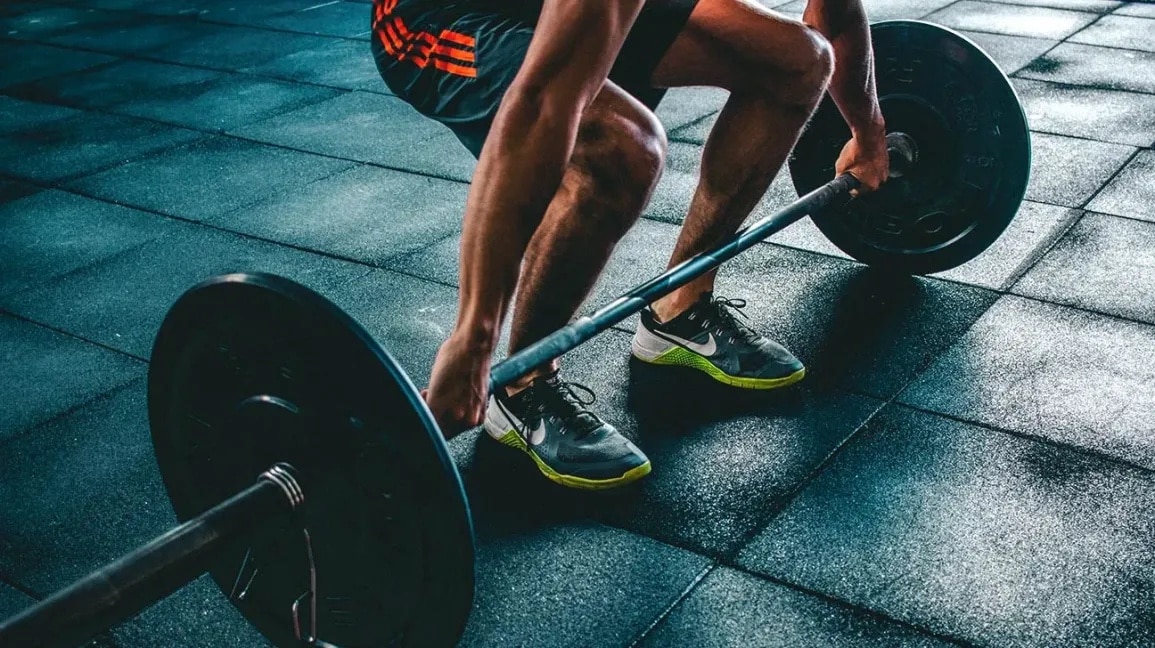
Up Your Leg Game With These Forgotten Moves
There are some underrated moves to complete on leg day for maximum gains!
Leg day has come again, so it is time to leave your sweat and tears on the gym floor and to build that teardrop instead.
Today I am going to take it back to the old school with a couple of compound moves that you don’t really see anymore, and the reason for that could be that it is ‘out of sight, out of mind’, or that people are relying on machines instead.
Whatever the reason may be, you don’t have an excuse anymore.
Why compound movements?
Apart from being more efficient and working more muscle groups simultaneously, a study from 2017 concluded that ‘resistance training programs involving multi joint (compound) exercises appear to be more efficient for improving muscle strength and maximal oxygen consumption than programs involving single joint (isolation) exercises.’
So let’s look at forgotten exercise No. 1.
The Barbell Hack Squat
Many people are so used to using a hack squat machine that they have no idea as to the existence of this move.
Now the primary muscles targeted during this move are the quadriceps, but being a compound movement your hamstrings and glutes will be the secondary muscles involved.
How to do it:
Set up the bar as you would with a deadlift
But this time you will be standing in front of the bar, with the bar starting behind your heels
Feet shoulder width apart
Then grasp the bar with an overhand grip
Keep the back straight
Then lift the bar upwards, while driving your heels into the ground and contracting your quad muscles
Then slowly squat back down, and return the bar back to the ground
And repeat
Tip: Ensure not to graze the backs of your legs while doing this move, so if you are a beginner practice first.
Why should I add this?
The deeper your squat gets the better your athletic performance could potentially become, as a study from 2012 looked at the ‘influence of squatting depth on jumping performance’, and it found that ‘deep front and back squats guarantee performance enhancing transfer effects of dynamic maximal strength to dynamic maximal speed strength capacity of hip and knee extensors.
Even though this isn’t a front or back squat it could help improve those particular multi joint moves.
Now let’s look at forgotten exercise No. 2.
The Jefferson Squat
Now this is a move you may not have seen in your gym, but Kai Greene brought it back into prominence some years ago, and if Kai Greene uses this to help build his wheels, then why wouldn’t you add it into your routine?
Now another name for this lift is the straddle deadlift, as even squat is in the title it is performed in a deadlift fashion.
This is a quad dominant exercise but it will also target your adductors, glutes and hamstrings also.
What is the Jefferson Deadlift?
Essentially it is the same exercise, as you use the same stance, same grip, everything is the same except that the main difference between the two movements is the shape of your back and the joints being flexed.
As during the jefferson squat you keep your spine erect and back straight, as you want the emphasis to be on the knee flexion, during the jefferson deadlift you will lean slightly forward as the emphasis will be on hip flexion.
It may take some practice and some mind to muscle connection to differentiate between the two moves.
How to do it:
As mentioned before you will be straddling the bar using a split stance
Front foot will be facing out, with the facing away from you (so you will be in a right angle position, or L shape)
Squat down to pick up the barbell with the front hand using an underhand grip, and the backhand using an overhand grip
Keep the core tight
Then stand up and really emphasis the push through the heels and really pushing the knees out, do not allow the knees to cave in (pronate)
To ensure good depth, use smaller plates, and lighter weights to ensure immaculate form
The slowly come down back to the starting position
And repeat accordingly
Tip: If doing the jefferson squat ensure you do not round your back and be sure to keep the back foot on the floor at all times.
Why should I add this?
Although it looks awkward to set up, and yes it really can be, it is a great variant for anyone who cannot back squat and a study from 2015 ‘indicated that the deadlift exercise may be effective in decreasing pain intensity and increasing activity for most patients with a dominating pattern of mechanical low back pain.’
Yes I realise I am not talking about the jefferson deadlift variation but with the set up being the same, even though the deadlift technique is not mentioned by name in the study it should be applicable to the jefferson squat also.
There you have it, you now have two new badass compound moves you can add to your leg day armoury.
So until next time, keep pumping!
References
https://www.ncbi.nlm.nih.gov/pmc/articles/PMC5744434/
https://www.ncbi.nlm.nih.gov/pmc/articles/PMC4592763/
https://pubmed.ncbi.nlm.nih.gov/21694556/
https://www.ncbi.nlm.nih.gov/pmc/articles/PMC6835729/
https://pubmed.ncbi.nlm.nih.gov/28704312/
https://pubmed.ncbi.nlm.nih.gov/22797000/
https://pubmed.ncbi.nlm.nih.gov/23442291/
https://pubmed.ncbi.nlm.nih.gov/22344055/
https://www.ncbi.nlm.nih.gov/pmc/articles/PMC7046193/
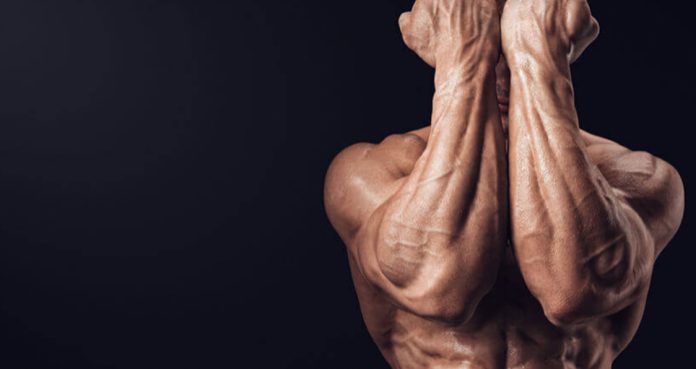
10 Exercises for Thicker Forearms
Exercises You Should Be Doing For Thicker Forearms
Forearms are one of the most overlooked muscle groups and don’t get the same love as the biceps. Forearms and biceps symmetry can add to the aesthetics of your body and can make your arms look bigger.
Bodybuilding is a game of delusions and thicker forearms and smaller joints can visually add significant size to your biceps. Before we dive into forearms training, let’s touch on the forearm anatomy for a minute.
Your forearms consist of two main muscle groups, the flexors, and extensors. Flexors are also responsible for pronation and extensors for supination. Flexors are present inside your forearms and extensors are on the outside of your forearms.
Reverse Grip Dumbbell Curls
The normal bicep dumbbell curls work the biceps, while the reverse grip dumbbell curls primarily work the forearms and the outer heads of the biceps. Holding the dumbbells with a monkey grip (thumbs over the handles) makes the movement more taxing on the forearms.
Barbell Wrist Curls
Barbell wrist curls are an isolation exercise and work the forearm flexors. If you don’t have an access to a wrist curl machine at your gym, you can place your forearms on a flat bench with your wrist hanging off the bench. Lower the barbell until your knuckles are facing the floor and your palms should be facing you at the top of the movement.
Reverse Barbell Wrist Curls
Reverse barbell wrist curls are the opposite of the normal wrist curls and work the forearm extensors. Hold the barbell with an overhand monkey grip to completely exhaust your forearms.
Arm Blaster Reverse Barbell Bicep Curls
The arm blaster can annihilate your forearms. Maintaining a strict form is the hardest thing while performing the reverse barbell curls. Using an arm blaster can eliminate the use of momentum. You can also use Fatgripz to recruit every muscle fiber in your forearms.
Barbell Roll Outs/Grip Crushers
The grip crushers will fill your forearms with lactic acid. Lock out your elbows and grab a barbell in front of your quads. Allow your hand to open and the barbell to roll to your fingertips. Return to the starting position and complete a wrist curl.
Farmer’s Walk
Farmer’s walk might look easy but will demand all you’ve left in the tank. Grab a pair of dumbbells you can hold on to for a couple of minutes. Go for a 40-50 yard walk with the dumbbells and at the end of the distance, stop and continue to hold the weights for as long as possible.
Towel Pull-Up
The harder it is for you to hold on to something, the more will be your forearm recruitment. Performing towel pull-ups can take your forearm gains to the next level. Set up a towel on the pull-ups bar and perform the pull-ups until you can’t hold onto the towel anymore.
Zottman Curls
Zottman curls are an overall arm builder. Unlike the textbook barbell and dumbbell curls, the Zottman curls train your forearms as well. Stand holding a dumbbell in each hand with the dumbbells facing your sides. Curl the weights so your palms are facing you at the top of the movement. Turn your palms to face down, and then lower the weights slowly, as in a reverse curl.
Behind the Back Cable Grip Crushers into Wrist Curls
Cables are a great way to maintain a constant tension on your muscles throughout the exercise. Grab a straight bar with your back facing towards the pulley. Open your hands and allow the bar to roll to your fingertips. Return to the starting position and complete a wrist curl at the top of the movement.
Plate Pinch
The plate pinch is a simple exercise which requires a couple of weight plates but will take your forearm gains to the next level. Start with two 10 pound weight plates and pinch them together with one hand. Just like the farmer’s walk, go for a 40-50 yard walk while pinching the plates together and at the end of the distance, stop and continue to hold the weights for as long as possible.
How often do you train your forearms? Let us know in the comments below. Also, be sure to follow Generation Iron on Facebook, Twitter, and Instagram.
